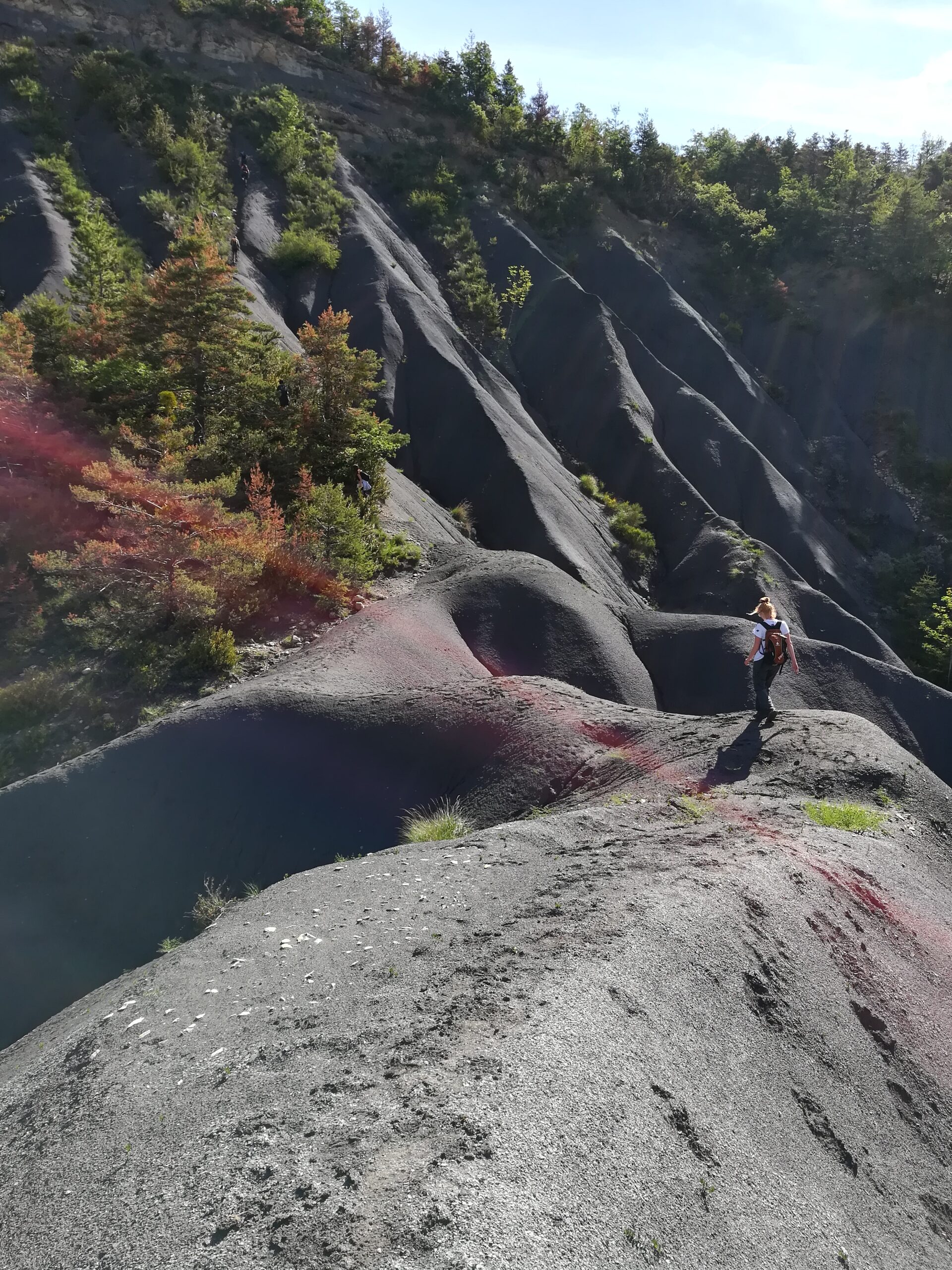PhD thesis in sedimentology-tectonics
Deadline: 12th June 2024
PhD subject : Haute Provence, 100 million years ago: palaeogeographic reconstructions of a key area between
the Alps and the Pyrenees
keywords : Fieldwork, sedimentology, structural geology, U/Pb dating, subsidence analysis, structural restoration
Supervisors : Claude Colombié (LGL-TPE, Lyon), Fabrice Cordey (LGL-TPE)
Start: Between October 2024 and January 2025
Image :Marls topped by a limestone bar in the Provencal Alpss.

Description:
Supervising team:
PhD supervisors: Claude Colombié (LGL-TPE, Lyon), Fabrice Cordey (LGL-TPE)
Co-supervisors: Simon Andrieu (LGL-TPE, Lyon), Philippe-Hervé Leloup (LGL-TPE, Lyon), Justine Briais (BRGM, Orléans)
Collaborations with laboratories : LGL-TPE, ISTerre (Grenoble) et Biogéosciences (Dijon), Réserve Naturelle géologique de Haute-Provence (RNNG04), Conseil Départemental des Alpes de Haute-Provence (CD04), Bureau de Recherche Géologique et Minière (BRGM)
Host laboratory:: LGL-TPE, University Lyon 1 (https://lgltpe.fr/)
Scientific background:
Around 100 million years ago (Albo-Cenomanian), the South-Eastern Basin, at the transition between the Alps and the Pyrenees, underwent a change from a divergent to a convergent tectonic regime. In Provence, this change resulted in the formation of the “Durancian uplift”. This wide-ranging east-west directional structure is a key element of the basin. However, its origin and role during the formation of the Alps remain misunderstood. To the south of the “Durancian uplift”, in the Provençal Basin, the Albo-Cenomanian is characterized by numerous sedimentary hiatuses, while to the north, in Haute- Provence, it is represented by dilated but relatively unknown sedimentary series. There, our recent sedimentological and stratigraphic studies show for the first time the diachronism of Cenomanian sedimentary facies, inducing the revision of the palaeogeographic reconstructions proposed so far. These studies also show that these lateral facies changes are associated with important thickness variations, which suggest the eastward migration of a long wavelength deformation during the lower Cenomanian, contemporary with the “Durancian uplift” formation. To date, the origin of this deformation remains an open question. Is the Cenomanian sedimentation controlled by an extensive regime? Is it expressed by normal faults? If so, where are they located? If not, what other tectonic processes (e.g. block, long-wave plicative, salt or a combination of the latter) can explain the strong variations in facies and thicknesses observed?
Objective :The main objective of this thesis will be to characterize and to date the palaeoenvironmental and tectonic events of the Albo-Cenomanian of Haute-Provence, a key period and area in the history of the pre-alpine structuring of the South-Eastern French Basin. To achieve this objective, the PhD student will 1) characterize the spatio-temporal evolution of the deposits (i.e. evolution of sedimentary geometries/architectures); 2) determine the nature and amplitude of the tectonic mechanisms responsible for the strong variations in facies and thicknesses observed; 3) provide a very highresolution spatio-temporal framework for these tectonic mechanisms, making it possible to calculate their velocity; and 4) reconstruct the palaeogeographies at key stages of this evolution.
Methods :
- Fieldwork (strong component of the thesis work);
- Facies sedimentology (in collaboration with supervisors);
- Stratigraphic correlation between reference sections and available boreholes and seismic profiles in the study area.
- Structural study of the palaeofaults revealed in the study area (in collaboration with the supervisors);
- U/Pb dating on calcite mineralised faults to determine active fault systems;
- Subsidence analysis and structural restoration using adapted models.
The results will be presented in the form of 3D block diagrams and balanced sections with an unprecedented accuracy. Eventually, the comparison of these results with those already available or being acquired for neighbouring regions and time periods will give a precise picture of the tectonic events responsible for the “Durancian uplift”, in the Pyrenean- Provençal and peri-Alpine geodynamic
framework.
Funding and environment:
This project is a winner of the AMI thesis 2024 of the ‘Alps and peripheral basins’ project of the Référentiel Géologique Français (RGF, BRGM) and has the scientific, logistical and financial support of the RNNG04 and the CD04. It will benefit from the LGL-TPE’s facilities for hosting the PhD student and preparing and analyzing samples (sample cutting workshop, calcimetry preparation laboratory, analytical platforms at ENS-Lyon and Lyon 1 University).
Applicant profile:
This subject mainly concerns candidates that have a Master’s or an engineering degree in Earth Sciences with strong skills in sedimentology and tectonics and field experience. Candidates will be evaluated on the quality of their curriculum and academic results as well as on the adequacy between their curriculum (and the subjects of their research internships) and the thesis topic. The rigor, motivation and enthusiasm of the candidates will be taken into consideration as well as good oral and written communication skills in French or English.
Application file:The file will be sent to: claude.colombie@univ-lyon1.fr before Wednesday, June 12th. It will contain the following documents:
- a detailed curriculum vitae with university course (rates and ranks) and work experience (titles of research internship reports or scientific publications) description;
- a cover letter;
- one or several reference letters (from internship supervisors of Master or equivalent, for example) or any evidence of the candidate’s worth and ability to complete this thesis.